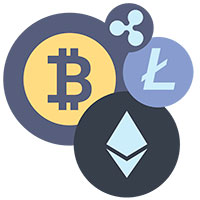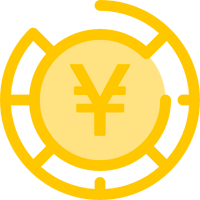The blockchain domain is brimming with platforms looking to make a mark in the decentralized environment. Polygon and Cardano stand tall among these, each boasting its distinct set of features and solutions to blockchain-centric challenges. This review delves deep into both Polygon and Cardano, highlighting their inception, technical underpinnings, consensus models, developer ecosystems, governance blueprints, token economics, practical use-cases, potential risks, community outreach, societal contributions, and future trajectories.
Through this detailed exploration, you'll acquire an enriched perspective on both networks and their potential influence on the future of decentralized platforms and monetary systems.
Diving into Their Histories
Polygon, formerly recognized as Matic Network, was conceived in 2017 by Jaynti Kanani, Sandeep Nailwal, and Anurag Arjun. They set out to tackle Ethereum's scalability conundrums through an innovative Layer 2 scaling strategy. The platform later evolved into Polygon, broadening its purview beyond mere Ethereum integration.
Conversely, Cardano sprouted from the mind of Ethereum co-founder, Charles Hoskinson. With the guidance of Input Output Hong Kong (IOHK) from 2015, Cardano aimed to birth a robust, scalable, and lasting blockchain ecosystem, grounded in research and science.
Technical Distinctions: Polygon and Cardano
Polygon's Technical Fabric
Polygon integrates the Polygon SDK, a Layer 2 scaling solution that empowers developers to construct scalable blockchain platforms anchored by Ethereum's mainnet. It offers an avenue for Ethereum-compatible networks, facilitating effortless merging with the Ethereum milieu. Further, Polygon’s multi-chain model significantly boosts transaction capacity, presenting an edge over Ethereum in terms of cost and throughput. This versatility permits Polygon to cater to a diverse range of decentralized platforms.
Cardano’s Technological Makeup
Cardano's architecture shines with its dual-layer design: the Settlement Layer (SL) and the Computation Layer (CL), with the former handling ADA transactions and the latter overseeing smart contracts. This structure focuses on fortified security and scalability, allowing individual layer modifications. Its developmental trajectory is underscored by research, peer-reviewed studies, and academic insights, ensuring lasting reliability.
Consensus Mechanisms: A Glimpse into Polygon and Cardano
Consensus mechanisms form the backbone of blockchains, ensuring transaction validation and participant agreement. Polygon employs a Proof of Stake (PoS) model, leveraging MATIC tokens for network security and transaction validation. This model offers improved scalability and reduced energy footprints relative to Proof of Work (PoW) methods.
Cardano, in contrast, adopts the distinctive Ouroboros PoS protocol. This protocol ensures decentralized transaction processing while maintaining swift transactional speeds and security. Ouroboros Praos, a variant, introduces a randomized selection process for slot leaders, further amplifying security.
Both PoS models have their merits over PoW, but Polygon's approach, thanks to Ethereum compatibility, has witnessed swifter embrace.
Developer Community Dynamics
Polygon's affinity with Ethereum has expedited its developer onboarding. They’ve cultivated a thriving developer community, fueled by hackathons, grants, and comprehensive support. Cardano's growth in its developer realm has been steady, grounded in its commitment to research and peer-reviewed methodologies. IOHK's collaborative spirit with the academic sector and developers fosters innovation through research and cooperation.
Governance Narratives
Polygon's governance leans towards centralization, with core members influencing decisions. However, they've shown intent to gravitate towards decentralized decision-making, incorporating community insights into protocol revisions. In contrast, Cardano champions decentralized governance. ADA stakeholders directly influence investment decisions, protocol enhancements, and funding allocations via a treasury system, decentralized exchanges, and voting modalities. This aligns seamlessly with Cardano’s decentralization principles.
Token Dynamics
Tokens play a pivotal role in any blockchain ecosystem. MATIC, Polygon’s native token, facilitates staking, transaction fees, and governance participation. Its capped supply aids in maintaining value. ADA, Cardano's inherent token, is integral for transaction fees, staking rewards, and governance participation, with a supply ceiling ensuring value appreciation potential.
Real-World Deployments
Polygon's Layer 2 solution has spurred various decentralized projects spanning gaming, DeFi, NFTs, and supply chain. Numerous blockchain ventures have fused with Polygon, enhancing scalability and user-friendliness. Cardano, focusing on forging strong alliances with governments, educational entities, and corporations, has positioned itself as a choice for projects desiring a research-backed blockchain solution. It presents solutions for identity management, voting mechanisms, supply chain oversight, and decentralized social platforms.
Risk Assessment
Both platforms grapple with challenges. Their pivot from centralized to decentralized governance models demands striking a balance between rapid development and community feedback. Competition, especially from other Layer 2 solutions, might threaten their market standings. Cardano's rigorous research focus, though laudable, could lead to upgrade delays, and it must grapple with rivals in the smart contract arena.
- Community Outreach. Both entities have fostered vibrant communities, essential for adoption and long-term viability. Polygon, owing to its Ethereum synergy, has a slight edge in community engagement. However, Cardano's research emphasis has garnered a passionate following.
- Societal Endeavors. Both the Polygon and Cardano foundations, despite their primary technological focus, have shown keenness in societal endeavors. Projects on both platforms hold the promise of addressing global issues like financial inclusivity, remittance, and green supply chains.
- Prospective Paths. Polygon's alignment with Ethereum suggests its continued relevance in the near future. Cardano's commitment to research hints at its potential for long-term investments and broader adoption in high-security applications. Facing scalability issues and third-generation blockchain competition, both entities must remain at the forefront of innovation.
- Wrapping Up. Polygon and Cardano, with their unique offerings in the blockchain arena, cater to distinct needs. While Polygon's rapid adoption is fueled by Ethereum synergy and Layer 2 scaling, Cardano's research-centric ethos promises a robust foundation. The choice between the two is dependent on project-specific needs.
As the blockchain realm progresses, the duel between Polygon and Cardano will spearhead technological strides and foster community involvement. Keeping tabs on their trajectories is crucial for developers and investors keen on the future of decentralized applications and financial systems.
FAQ Snapshot
- Difference between Polygon and Cardano? Polygon offers Layer 2 scaling for Ethereum, enhancing throughput and affordability. Cardano, grounded in research, brings a unique dual-layered architecture focused on transaction validation, security, and sustainability.
- Is Polygon superior to Cardano? The suitability of Polygon or Cardano hinges on a project's specific demands. Polygon's scaling solution is apt for scalability-seeking platforms, while Cardano's layered architecture is tailored for advanced, secure smart contract applications.
- Why does Polygon cost less than Cardano? The cost variance stems from their consensus algorithms and architectural designs. While both use PoS, Polygon's model is more energy-efficient. Cardano, with its dual-layer system and emphasis on research, might incur additional expenses due to added layers of security and complexity.

















